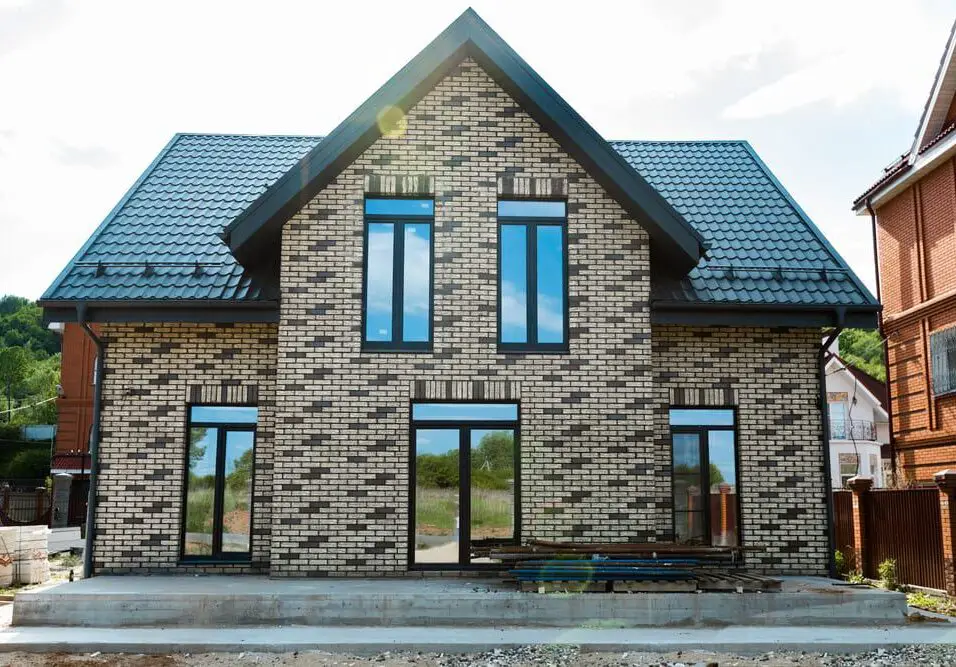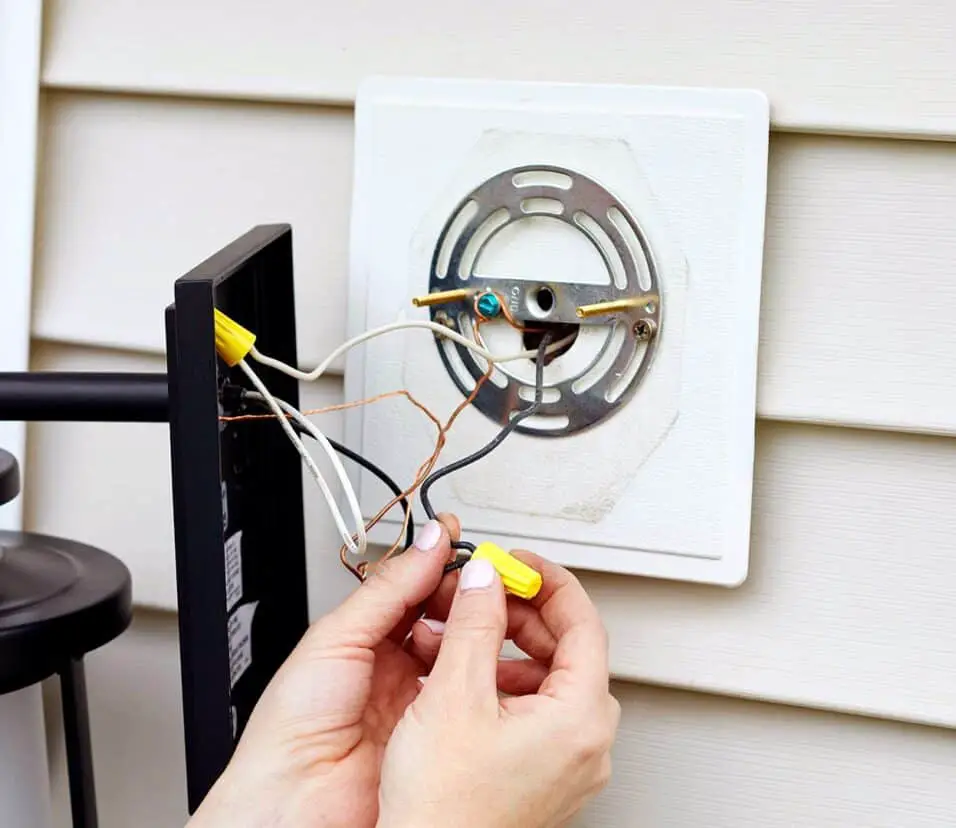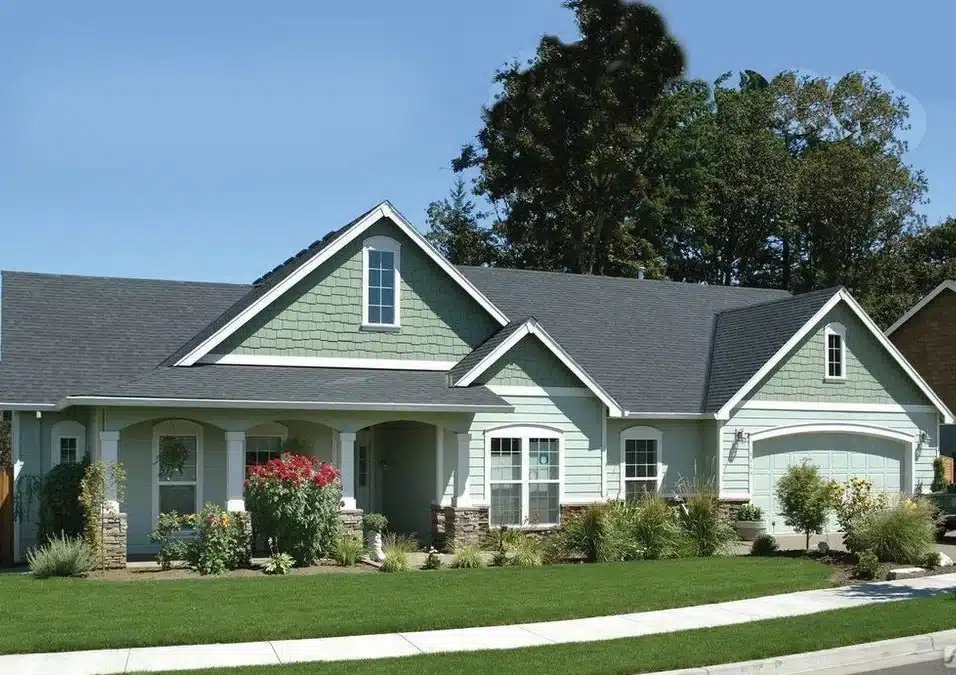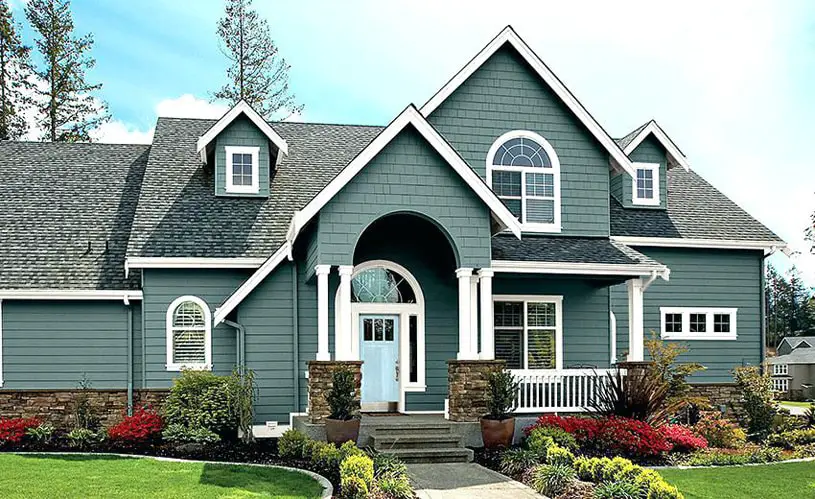How To Paint Exterior Stucco
Introduction
How To Paint Exterior Stucco: Painting the exterior stucco of your home can be a great way to refresh its appearance and protect it from the elements. Stucco is a popular choice for exterior walls due to its durability and low maintenance requirements. However, over time, the color of stucco can fade or become outdated, making it necessary to give it a fresh coat of paint. Whether you are looking to enhance your home’s curb appeal or simply want to give it a new look, this article will guide you through the process of painting exterior stucco.
Preparing the Surface: Proper preparation is key to achieving a professional-looking exterior paint job on stucco. The first step is to thoroughly clean the surface to remove any dirt, dust, or mildew. This can be done using a pressure washer or a scrub brush and a mixture of water and mild detergent. Once the surface is clean and dry, any cracks or holes should be repaired using a stucco patching compound. It is important to allow the patching compound to fully cure before moving on to the next step. Additionally, any loose or peeling paint should be scraped off and sanded to create a smooth surface for the new paint to adhere to.

Can you paint exterior stucco yourself?
The best way to paint a stucco exterior is to either spray, brush or roll it. You can rent a paint sprayer if you don’t own one. We recommend using AURA® Exterior paint on stucco. Most people opt for a flat sheen when painting stucco to mask any imperfections.
Yes, it is possible to paint exterior stucco yourself. Painting the exterior of your home can be a great way to refresh its appearance and protect it from the elements. Stucco is a popular choice for exterior walls due to its durability and low maintenance requirements. However, over time, the paint on stucco can fade or become damaged, necessitating a fresh coat of paint.
Before you begin painting
It is important to properly prepare the stucco surface. This includes cleaning the stucco to remove any dirt, dust, or mildew. You may need to use a pressure washer or a scrub brush to thoroughly clean the surface. Additionally, any cracks or holes in the stucco should be repaired before painting. This can be done using a stucco patching compound.
Once the surface is clean and repaired, you can begin the painting process. It is recommended to use a high-quality acrylic latex paint specifically designed for stucco surfaces.
Before applying the paint, it is advisable to prime the stucco surface. This will help the paint adhere better and provide a more even finish. A primer specifically formulated for stucco surfaces should be used. Once the primer has dried, you can begin applying the paint.
When painting stucco, it is important to work in small sections and apply multiple thin coats rather than one thick coat. This will help ensure a more even and long-lasting finish. It is also important to allow each coat to dry completely before applying the next.
What type of paint do you use for stucco?
acrylic latex exterior paint
Acrylic Paint
About 80% of the time you will want to go with acrylic latex exterior paint. This paint is likely your best option. It’s flexible, durable, and allows the stucco to breathe. They are also known for being easy to apply as well as low maintenance to clean up.
When it comes to painting stucco, it is important to choose the right type of paint that will adhere well to the textured surface and provide long-lasting protection. Stucco is a popular choice for exterior walls due to its durability and ability to withstand harsh weather conditions.
One of the most commonly recommended types of paint for stucco is an elastomeric paint. Elastomeric paints are specially formulated to stretch and contract with the surface, making them ideal for stucco which expands and contracts due to temperature changes. This type of paint creates a flexible and durable finish that can help prevent cracking and peeling. Elastomeric paints also have excellent water resistance, which is important for stucco as it is often exposed to rain and moisture.
Acrylic latex exterior paint
Another option for painting stucco is acrylic paint. Acrylic paints are known for their excellent adhesion and durability, making them suitable for stucco surfaces. They provide a smooth and even finish and are available in a wide range of colors. Acrylic paints also offer good resistance to fading and cracking, making them a popular choice for stucco exteriors.
It is important to note that when painting stucco, it is recommended to use a primer before applying the paint. A primer helps to create a smooth and even surface for the paint to adhere to, and it also improves the paint’s durability and longevity.
When painting stucco, it is important to choose a paint that is specifically formulated for this type of surface. Elastomeric paints and acrylic paints are both excellent options, providing durability, flexibility, and resistance to cracking and fading. Additionally, using a primer before painting can further enhance the longevity and appearance of the paint job. By selecting the right type of paint and properly preparing the surface, you can ensure a beautiful and long-lasting finish for your stucco walls.
Do I need to prime exterior stucco before painting?
Another best practice is to prime stucco before painting, as primer functions as an intermediary between the stucco and coating. It also stops stucco from drawing moisture from the coating and discoloring it. A good, alkali-resistant primer will help your coating provide greater coverage and better performance.
Yes, it is highly recommended to prime exterior stucco before painting. Priming serves as a crucial step in the painting process, especially for stucco surfaces. Stucco is a porous material that can absorb moisture, and without proper priming, the paint may not adhere properly to the surface, leading to peeling, cracking, and other issues.
Priming helps create a smooth and even surface for the paint to adhere to. It seals the porous surface of the stucco, preventing moisture from seeping in and causing damage. Additionally, priming helps to improve the durability and longevity of the paint job, ensuring that it stays intact for a longer period of time.
When choosing a primer for exterior stucco
It is important to select a product specifically designed for masonry surfaces. These primers are formulated to penetrate the porous surface of stucco and provide a strong bond for the paint. They also help to even out the texture of the stucco, making it easier to achieve a smooth and professional-looking finish.
Before applying the primer, it is essential to properly prepare the stucco surface. This involves cleaning the surface to remove any dirt, dust, or loose particles. It may also be necessary to repair any cracks or damaged areas before priming.
Piming exterior stucco before painting is highly recommended to ensure a successful and long-lasting paint job. It helps to seal the porous surface, improve paint adhesion, and enhance the overall durability of the finish.
Can you paint directly on stucco?
Certainly, painting the exterior stucco of your home greatly increases curb appeal. In addition, a fresh coat of paint can do wonders to protect the surface from the elements like UV rays and heavy rain. As mentioned prior, stucco is a hard but porous material used for exterior finishes.
Yes, it is possible to paint directly on stucco. Stucco is a popular exterior finish for many homes and buildings due to its durability and aesthetic appeal. However, over time, the color of stucco can fade or become outdated, prompting homeowners to consider painting it. Painting stucco can not only refresh the appearance of a building but also provide an added layer of protection against the elements.
Before painting stucco, it is important to properly prepare the surface to ensure the paint adheres well and provides a long-lasting finish. The first step in preparing stucco for painting is to clean it thoroughly. This can be done by using a pressure washer or a stiff brush to remove any dirt, dust, or loose debris. It is also important to repair any cracks or damage in the stucco before painting. This can be done by filling the cracks with a stucco patching compound and allowing it to dry completely.
Once the stucco is clean and repaired
It is recommended to apply a primer before painting. A primer helps to create a smooth and even surface for the paint to adhere to, as well as improve the durability and longevity of the paint job. It is important to choose a primer that is specifically designed for stucco surfaces. After the primer has dried, the stucco can be painted using a high-quality exterior paint.
When painting stucco, it is important to use the right tools and techniques to achieve the best results. A roller or a sprayer can be used to apply the paint, depending on the size and texture of the stucco surface. It is recommended to apply two coats of paint for a more even and durable finish.
Do you need special paint for stucco?
Yes, to paint stucco surfaces, choose either acrylic, masonry, or elastomeric paint. Other types of paint may look good going on but be prone to bubbling, peeling, and cracking.
Yes, special paint is required for stucco surfaces. Stucco is a popular exterior finish for homes and buildings, known for its durability and unique texture. However, because of its porous nature and rough surface, stucco requires a specific type of paint that is designed to adhere properly and provide long-lasting protection.
Stucco is made from a mixture of cement, sand, and water, which creates a rough and uneven surface. Regular paint is not suitable for stucco because it will not adhere properly and may peel or crack over time. Special paint for stucco is formulated with additives that help it bond to the surface and withstand the elements.
One of the key characteristics of stucco paint is its breathability. Stucco is a porous material that allows moisture to pass through, and using the wrong type of paint can trap moisture within the walls, leading to mold and other issues. Stucco paint is designed to allow moisture to escape while still providing a protective barrier against the elements.
In addition to breathability, stucco paint also offers enhanced durability.
When choosing stucco paint, it is important to select a product that is specifically labeled for use on stucco surfaces. These paints are typically thicker and have a higher solids content, which helps them adhere to the rough surface of stucco. They also often contain additives such as elastomeric polymers, which provide flexibility and help the paint withstand movement without cracking.
Preparing exterior stucco for painting is crucial to ensure a long-lasting and professional-looking finish. The first step is to thoroughly clean the surface by power washing or scrubbing with a mixture of water and mild detergent. This will remove any dirt, dust, or loose particles that could affect the adhesion of the paint.
Next, it is important to repair any cracks or damaged areas in the stucco. Use a high-quality stucco patching compound to fill in the cracks and smooth out the surface. Allow the patching compound to dry completely before moving on to the next step.
After the repairs are done, it is recommended to apply a coat of primer to the stucco. This will help the paint adhere better and provide a more even finish. Choose a primer that is specifically designed for stucco surfaces. Once the primer is dry, you can proceed with applying the paint.
What type of paint is recommended for painting exterior stucco?
When it comes to painting exterior stucco, it is important to choose the right type of paint that can withstand the harsh outdoor conditions and adhere well to the stucco surface. The most recommended type of paint for exterior stucco is an acrylic-based paint. Acrylic paint is known for its durability, flexibility, and resistance to cracking, peeling, and fading. It also provides excellent coverage and is available in a wide range of colors.
Another important consideration when selecting paint for exterior stucco is to choose a paint that is specifically formulated for masonry or stucco surfaces. These paints are designed to bond well with the stucco and provide a long-lasting finish. Look for paints that have a high level of adhesion and are breathable, allowing moisture to escape from the stucco surface.
Are there any specific tools or equipment required for painting exterior stucco?
When it comes to painting exterior stucco, there are a few specific tools and equipment that are necessary to ensure a successful and professional-looking finish. These tools not only help in achieving a smooth and even application of paint, but also aid in the preparation and protection of the stucco surface.
One of the most important tools for painting exterior stucco is a high-quality paint sprayer. A paint sprayer allows for a more efficient and even distribution of paint, resulting in a smoother finish. It is recommended to use an airless paint sprayer for stucco, as it can handle the thicker consistency of stucco paint.
In addition to a paint sprayer, other essential tools for painting exterior stucco include a paint roller with a thick nap, paint brushes in various sizes for detailed work, and a paint tray or bucket for holding the paint. It is also important to have a sturdy ladder or scaffolding to reach higher areas of the exterior walls.
How long does it typically take for exterior stucco paint to dry and cure?
When it comes to drying and curing exterior stucco paint, there are a few factors to consider. Generally, it takes about 24 to 48 hours for the paint to dry to the touch. However, it’s important to note that drying time can vary depending on the temperature and humidity levels in your area. Higher temperatures and lower humidity can speed up the drying process, while cooler temperatures and higher humidity can slow it down.
While the paint may feel dry to the touch after a day or two, it’s crucial to allow sufficient time for the paint to fully cure. Curing refers to the process in which the paint reaches its maximum hardness and durability. This can take anywhere from one to three weeks, depending on the specific paint product and environmental conditions. It’s important to follow the manufacturer’s instructions for curing time to ensure the best results.
Are there any special considerations or techniques for achieving a smooth and even finish when painting exterior stucco?
When it comes to achieving a smooth and even finish when painting exterior stucco, there are a few important considerations and techniques to keep in mind. Firstly, it is crucial to properly prepare the surface before applying any paint. This includes cleaning the stucco thoroughly to remove any dirt, debris, or loose paint. Additionally, any cracks or imperfections should be repaired and smoothed out to ensure a seamless finish.
Another important technique is to use the right type of paint and application method. It is recommended to use an elastomeric paint specifically designed for stucco surfaces, as it provides excellent adhesion and flexibility. When applying the paint, it is best to use a high-quality roller or sprayer to achieve an even coat. It is important to work in small sections and blend the paint strokes to avoid any visible lines or streaks.
Furthermore, it is crucial to consider the weather conditions when painting exterior stucco. It is best to avoid painting in extreme temperatures or during rainy or humid days, as this can affect the drying and curing process. It is also important to follow the manufacturer’s instructions regarding drying and curing times, as rushing the process can result in an uneven finish. By taking these considerations and techniques into account, you can achieve a smooth and even finish when painting exterior stucco.

Conclusion
Painting exterior stucco can be a challenging task, but with the right techniques and materials, it is definitely achievable. By following the steps outlined in this guide, you can ensure that your stucco is properly prepared and painted, resulting in a beautiful and long-lasting finish.
When it comes to actually paint stucco, it is important to use the right tools and techniques. A roller or sprayer is typically the best option for applying paint to stucco, as it allows for even coverage and helps to avoid streaks or brush marks. It is also important to work in small sections and apply multiple thin coats, rather than one thick coat, to ensure a smooth and even finish.
Painting exterior stucco requires proper preparation, the right materials, and careful application. By following the steps outlined in this guide, you can achieve a professional-looking finish that will enhance the appearance of your home and protect the stucco for years to come. So, don’t be intimidated by the task – with a little patience and attention to detail, you can successfully paint your exterior stucco and enjoy the results for years to come.








